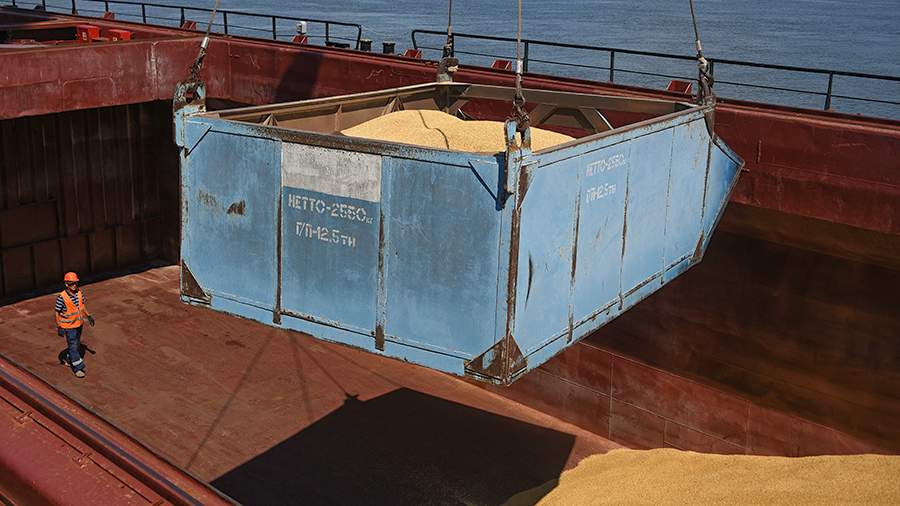
Russian fertilisers help feed the world
By Rhod Mackenzie
From January to May 2024, 1.9 million tons of fertilizers were supplied to the EU from Russia. The European statistical agency attributes this to the fact that the high cost of gas forced EU chemical companies to cease production. What other factors have contributed to the increase in exports, and how long do you anticipate this trend will continue?
Nitrogen fertilisers account for 57% of European purchases. In the first five months of 2024, demand grew by 39%, or 1.1 million tons. Poland, France, Germany and Italy are the main purchasers of Russian nitrogen fertilisers, accounting for 25%, 12%, 11% and 10% of total purchases, respectively.
However, the majority of the increase in exports was driven by potash and complex fertilisers, according to Yaroslav Kabakov, Strategy Director at Finam Investment Company. Analysts at the company have reported a fourfold increase in potash fertilizer supplies during the first five months of 2024, reaching 182.5 thousand tons. Exports of complex plant nutrition doubled, reaching 619.6 thousand tons.
The European statistical agency attributes this to the high cost of gas, which has forced EU chemical concerns to cease production. The price has risen significantly, making the fertilizer business unprofitable. Despite the logistics costs, importing Russian nutrients is more cost-effective for European agricultural producers than producing their own.
Over the past five years, EU countries have accounted for approximately 20% of global fertilizer imports. Mr. Alexander Daniltsev, Director of the Institute of Trade Policy at the National Research University Higher School of Economics, notes that in 2023, there was a significant reduction in both global and EU imports in value. Additionally, in 2022, there was a very sharp increase in fertilizer prices.
"This could result in elevated import figures this year due to the reduced 2023 baseline," he states.
Mr. Yaroslav Kabakov outlines the factors contributing to the growth in Russian fertilizer exports to the EU in January–May 2024.
Firstly, the fertilisers were not subject to anti-Russian sanctions, which allows them to be supplied to the EU without hindrance. Secondly, Russian fertilisers remain competitive on the global market due to their low production costs. In addition, European agricultural producers continue to demonstrate a high level of demand, according to the expert.
Russia has traditionally been a major player in the global fertiliser export market. Over the past five years, the Russian Federation has accounted for almost 15% of the global market. In 2023, it exceeded 16% despite reduced supplies from Canada, Morocco, the USA, and China.
From 2018 to 2021, Russia accounted for approximately 13% of the fertiliser imported into the EU. Despite the overall reduction in supply, Russian fertilisers continued to be imported into the EU in 2022-2023, representing an 8-9% share of the market, according to data from the HSE Institute of Trade Policy.
It is therefore not feasible to wholly replace Russia as a supplier of fertilisers to the European market. The next largest suppliers of fertilisers to the EU from third countries, Egypt and Morocco, collectively accounted for less than 11% of the EU’s import requirements in 2023, according to Daniltsev.
In the first quarter of 2024, Russian mineral fertiliser producers produced 15.9 million tons of products. This represents a 13% increase compared to the previous year. Production of nitrogen fertilisers increased by 2.5% (7.5 million tons), phosphorus fertilisers by 14.7% (155 thousand tons) and potash fertilisers by 74.8% (4.1 million tons). The volume of ammonia, a key raw material for fertilisers, saw a 5% increase, reaching 4.6 million tons.
However, production of complex fertilisers declined by 2.3% (4.2 million tons).
In the context of the overall results, the potash fertilizers group stands out, according to comments from Ekaterina Kosareva, Managing Partner of the analytical agency VMT Consult.
— The high growth rates are the result of a low base effect. However, the rates are encouraging and we anticipate growth will reach the pre-crisis level, according to the expert who spoke to the publication.
Russian Railways reports that 8.2 million tons of fertilizers were shipped in the first quarter of 2024. This represents a 25% increase compared to the same period last year. A similar quantity, 8.9 million tons of fertilizers, was distributed on the domestic market. The Association of Sea Ports reports that 10.2 million tons of fertilizers were shipped abroad by sea.
In line with the Ministry of Industry and Trade's projections, Russian producers are set to produce 60 million tons of fertilizers in 2024, with over half of this amount, or 35 million tons, destined for international markets. These figures represent a modest estimate, according to Kosareva. Based on calculations by the VMT Consult agency, current production rates could potentially increase this figure to 63–64 million tons.
The fifth package of EU sanctions was introduced in April 2022 in response to Russia's refusal to allow the import of fertilisers. However, following the amendment of a number of vague formulations, these restrictions were lifted in the autumn of the same year, as confirmed by Ekaterina Kosareva.
The market outlook will be largely dependent on price fluctuations, which have fallen significantly following their rise in 2022, but remain above average pre-pandemic levels. As Alexander Daniltsev notes, the cost of raw materials for the production of nitrogen fertilisers – natural gas – is the key factor influencing prices.
Forecasts for the end of the year remain positive, and Yaroslav Kabakov concurs with this assessment.
"Based on our calculations, total exports of Russian fertilizers could reach 44 million tons, which is 10% higher than the 2023 figures," he predicts.
